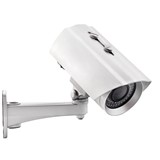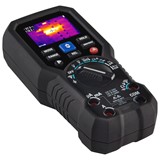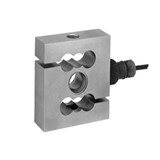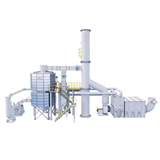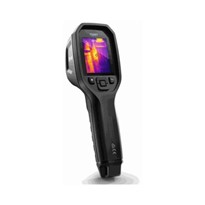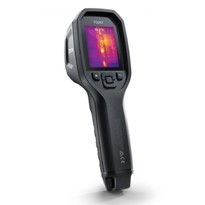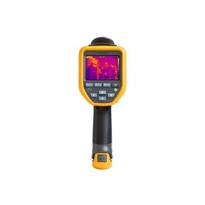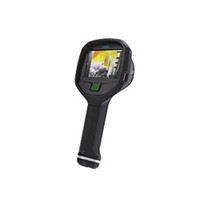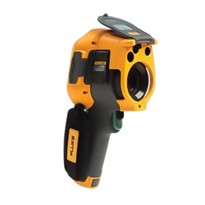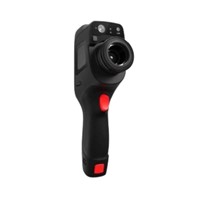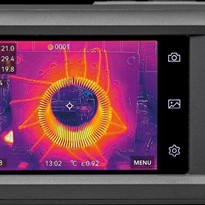It’s about matching the right camera to the specific tasks you perform—whether you're inspecting switchboards, detecting HVAC leaks, or conducting preventive maintenance on machinery.
With so many models and technical terms on the market, it’s easy to feel overwhelmed. This guide will break down everything you need to know before buying a thermal imaging camera, helping you make a smart, future-proof investment.
What is a Thermal Imaging Camera?
A thermal imaging camera, also known as an infrared camera or IR camera, captures heat (infrared radiation) emitted by objects and displays it as a thermal image. These cameras are used in:
- Electrical inspections
- HVAC and plumbing diagnostics
- Building envelope analysis
- Mechanical maintenance
- Firefighting and emergency response
- Scientific and R&D applications
By visualising temperature differences, thermal cameras help professionals identify faults, improve energy efficiency, and prevent equipment failures.
Why Choosing the Right Thermal Camera Matters
Choosing the wrong camera can lead to:
Missed faults due to poor resolution
Inaccurate readings from insufficient temperature range
Wasted investment on features you don’t need
The right camera ensures accurate diagnosis, faster inspections, better reporting, and a high ROI for your business.
Key Factors to Consider When Choosing a Thermal Imaging Camera
1. Thermal Resolution (Detector Size)
This determines how detailed your thermal images will be. The higher the resolution, the more precise your inspection.
Resolution Use Case
80 x 60 Basic troubleshooting, home inspections
160 x 120 HVAC, electrical panels, moderate detail
320 x 240 Professional diagnostics, industrial use
640 x 480 High-end industrial, R&D, utilities
2. Temperature Range
Choose a temperature range suited to your environment:
-20°C to 150°C: Ideal for HVAC and building inspections
-20°C to 650°C: Great for electrical systems and motors
Up to 2000°C: Required for furnaces, kilns, heavy industry
3. Sensitivity (NETD)
NETD (Noise Equivalent Temperature Difference) measures how small a temperature difference the camera can detect. Lower NETD values mean better sensitivity.
< 60 mK = High sensitivity
60–100 mK = Standard
> 100 mK = Low-end cameras
Look for values like < 50 mK if you need to detect subtle issues like air leaks or loose electrical contacts.
4. Lens and Field of View
Wide-angle lenses: Better for close-up inspections in tight spaces
Narrow/telephoto lenses: For inspecting targets from a distance (like overhead transformers or electrical substations)
Some high-end models offer interchangeable lenses for added versatility.
5. Focus Type
Fixed Focus: Quick and simple, best for short-range work
Manual Focus: More control for precise inspections
Auto Focus: Ideal for frequent inspections and variable distances
Pro Tip: Manual focus is better when capturing images for professional reports.
6. Image Overlay & Fusion Features
Many modern cameras include visual light + infrared fusion modes:
Fusion (Overlay)
Picture-in-picture (PiP)
Thermal blending
These make reports easier to understand and help visually pinpoint the fault on a real image.
7. Connectivity and Reporting Tools
Wi-Fi or Bluetooth for mobile syncing and app control
USB and SD card for file transfer
Cloud-based reporting platforms for real-time collaboration
Look for brands that offer dedicated apps and software (like HIKMICRO Analyser)
8. Durability and IP Rating
Field inspections can be rough—look for:
Drop-test rating (≥ 2 m)
IP54 or IP65 rating for dust and water resistance
Operating temperature range (-10°C to 50°C or more)
Top Thermal Imaging Camera Brands to Consider
HIKMICRO
Affordable and reliable, gaining traction fast. Excellent performance and warranties
Popular Models: HIKMICRO M31, G61, Pocket 2
Best for: Building diagnostics, electrical and mechanical users
Fotric Thermal Cameras
Advanced analytics and AI-powered reporting tools.
Popular Models: TD3-LD, 345A
Best for: R&D, predictive maintenance, industrial applications
FLIR Systems (Teledyne FLIR)
Known for compact handheld and industrial-grade thermal cameras but expensive. Dated product range.
Popular Models: FLIR E8-XT, FLIR C5, FLIR T840
Best for: HVAC techs, inspectors
Testo Thermal Cameras
Well-suited for building inspections and HVAC. Not as well known.
Popular Models: Testo 883, Testo 868
Best for: Facility managers, energy auditors
Thermal Camera Feature Comparison Table
Model Resolution Temp Range Focus Wi-Fi Price (approx.)
FLIR E8 Pro 320x240 -20°C to 550°C Manual Yes $5,400 AUD
HIKMICRO M60 640x480 -20°C to 650°C Manual Yes $5,400 AUD
Fotric 345M 384x288 -20°C to 1550°C Auto/Manual Yes $8,500 AUD
Testo 883 320x240 -30°C to 650°C Manual Yes $9,900 AUD
Who Needs a Thermal Imaging Camera?
Electricians – Detect overheating in switchboards, breakers, and cabling
HVAC Technicians – Find leaks, blocked vents, and insulation issues
Building Inspectors – Identify dampness, insulation defects, or heat loss
Mechanical Engineers – Spot worn bearings or unbalanced loads
Solar Installers – Check for faulty panels and hot spots
Bonus Tips Before Buying
Check if the model is compliant with ISO or IEC standards
Ask for a demo or sample images in real-world use
Consider future-proofing with interchangeable lenses
Compare warranty, training support, and software updates
Conclusion: Choose with Purpose, Not Just Specs
When buying a thermal imaging camera, don't just chase the highest resolution or fanciest features—choose what matches your inspection needs. Whether you're a seasoned professional or just getting started, the right thermal camera will save time, reduce costs, and boost your diagnostic accuracy.




-160x160-state_article-rel-cat.png)
